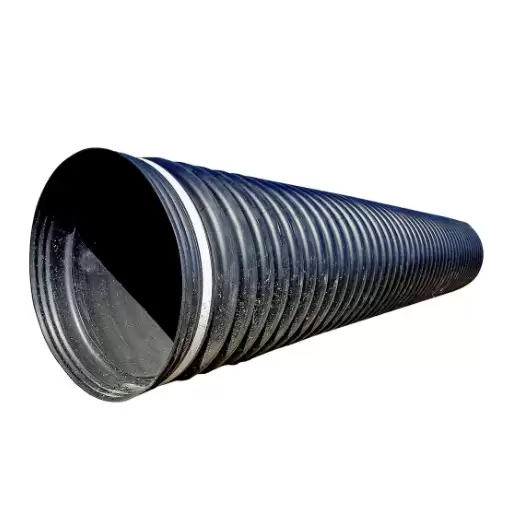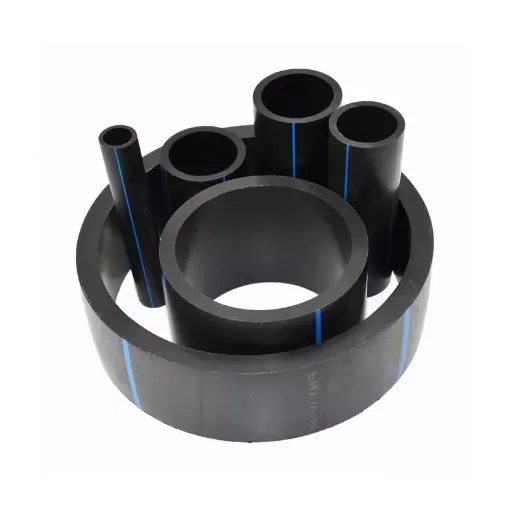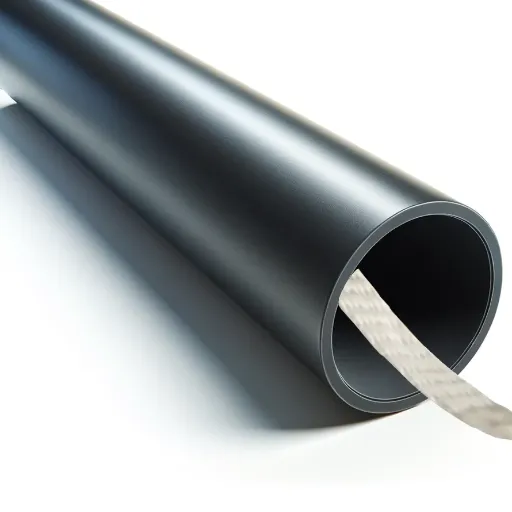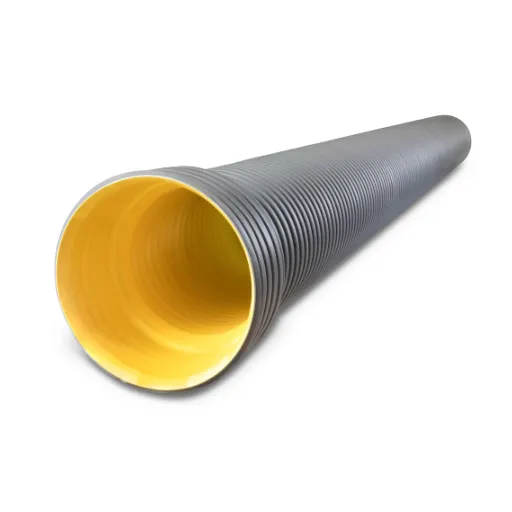High-Density Polyethylene (HDPE) culvert pipes have become a vital component in modern infrastructure projects, thanks to their durability, cost-efficiency, and versatility. Whether it’s managing stormwater, facilitating drainage, or supporting highway construction, HDPE culvert pipes offer a reliable solution that outperforms traditional materials in many applications. This article delves into the essential aspects of HDPE culvert pipes, including their available sizes, technical specifications, and the various scenarios where they provide critical utility. By the end, you’ll gain a comprehensive understanding of why HDPE is a preferred choice for engineers and project planners worldwide.
What are the Different HDPE Culvert Pipe Sizes Available?
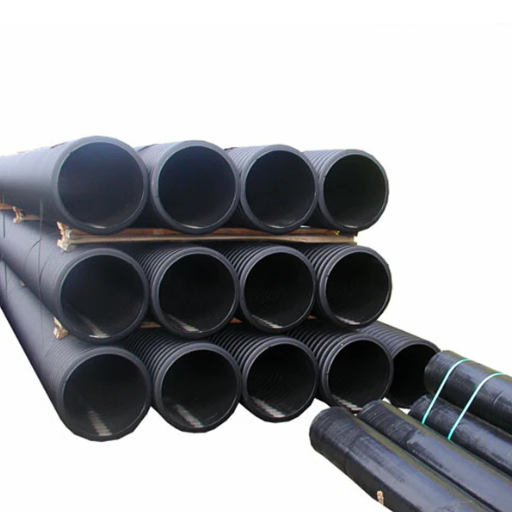
Standard Diameter Options for HDPE Culvert Pipe
Culvert pipes made from high-density polyethylene (HDPE) have standard diameters ranging from 4 inches to 60 inches to meet diverse infrastructural needs. Residential projects that involve water management usually use the smaller diameters ranging from 4 to 12 inches, while 60 inch pipes are reserved for industrial and municipal drainage systems or other high-capacity storm water applications.
HDPE pipes also come in non-standard custom sizes to meet more specific project needs. They are manufactured with strict adherence to standards, which makes them suitable for highly exacting engineering applications. Many HDPE culvert pipes also feature a corrugated design, which increases their structural strength, allowing efficient handling of heavy loads and high-pressure environments.
The range of diameters available for these pipes, coupled with their wide usage versatility, has positioned HDPE culvert pipes as a preferred remedy for erosion control, construction site drainage, and agricultural irrigation. Engineers and construction workers alike pick your preferred diameter based on the expected water flow, soil type, soil bearing capabilities, and ever-changing project requirements, shifting the plea to use HDPE into a preferred material.
How to Choose the Right Pipe Length for Your Project?
Selecting a pipe’s length for your project requires consideration of the application scope, the geospatial context, and other particular project requirements. Calculate the distance in a straight line to see how much area the pipe optimally covers. Consider all other factors, such as slopes or bends, that may lead to longer pieces.
Evaluate all other factors—possibly the most important being the flow requirements and the purpose of the pipe itself. Your project will hike its dynamics, or rather perform more smoothly, if everything is balanced. For the efficient function of the system, the length of the pipe in question needs to be harmonized with the hydrodynamics of the system in place. For instance, significant drainage projects or those involving long transport lines may suit pipes with long segments that are less susceptible to leaks. Alternatively, complex systems with multiple configurations of bends and joints might require shorter, more modular pieces.
Some public infrastructure works and regulated industries may have construction standards that prescribe minimum or maximum pipe lengths for public use purpose. Through combining accurate measurements, needs, and compliance requirements, you can customize the selected pipe length to keep the objectives of operational efficiency, durability, and project scope in balance.
Considerations for Dual Wall Pipe and Corrugated HDPE Dimensions
While considering dual wall pipe and also corrugated HDPE, their dimension should pertain to the load carrying capacity and application needs. Supported by structural performance requirements to handle varying load contour dual-wall pipes, which are usually employed in drainage and irrigation piping systems, also have various cavities and smooth surfaces supportive of hydraulic flow. In these applications, hydraulic efficiency is supported by dual wall corsponding dimensions while keeping system reliability and consistency in mind.
Pipe size range, wall thickness, and material grade compliance with industry requirements like ASTM F2306/F2306M or AASHTO M294 is another important consideration. These offer inate value by ensuring interogated components and fittings will structurally reliable and seamlessly compatible. Several HDPE pipes are sited in expecially oversized stormwater systems, which easily boast diameters ranging from four inches to sixty inches. These specifications guarantee system strain while affording overall structural quality.
Pipes composition and effectiveness can also be influenced by these environmental aspects. Regions exposed to aggressive weather and soil types will benefit from upgraded resins with enhanced strength to stress crack. Also, other such as depth grade, slope grade and type of fluid can change required dimensions of the pipe. These variables need to be assessed with tailored engineering evaluations against the set performance benchmarks to achieve proper system sustainability in the long run.
What Should I Know About HDPE Culvert Pipe Specifications?
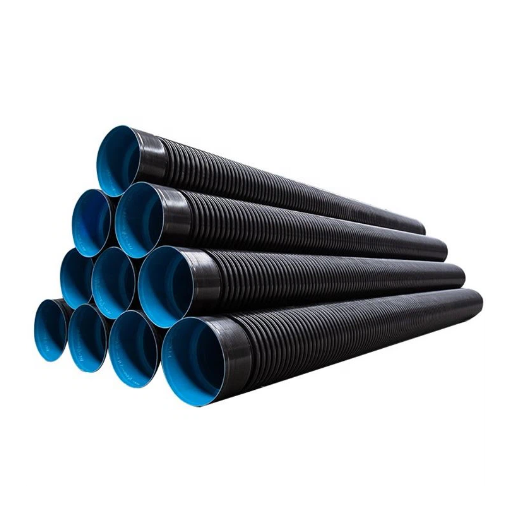
Importance of Corrosion and Abrasion Resistance
Highly engineered for their resistance to corrosion and abrasion, High-Density Polyethylene (HDPE) culvert pipes withstand the most extreme conditions and environments, making them useful in infrastructural work as well as in drainage system culvert applications. The inert nature of HDPE due to its low density makes the pipe material immune to chemical degradation, including acidic, alkaline, or aggressive chemical attacks. Cross-sectionally, HDPE pipes are superior to traditional counterparts like concrete or steel. Unlike the former, cross-sectionally, they also do not rust, rot, or corrode due to prolonged contact with harsh wastes, agricultural runoff, industrial effluents wastewater.
Abrasion resistance is another critical attribute of HDPE culvert pipes, especially where sediment-laden or high-velocity flows are in use. Possession of lower internal guideline friction permits smoother cruising for particles within water instead of inhibiting it. Research has demonstrated that HDPE’s wear resistance is superior to many competing materials. The demand for such materials is bound to increase because of the boost in operational reliability and extended life guarantees ensure even in harsh conditions.
The system reliability and versatility of use offered by HDPE, enables budget optimization while ensuring durability and requiring significantly less maintenance investments in the reparative aspects. The economic value these HDPE pipes bring in modern engineering along with operational importance highlight their value unlike any other.
How Wall Pipe Products Meet Specification Criteria
These wall pipe items are particularly designed to fit the specific requirements of numerous industries. They satisfy ISO and ASTM standards, which emphasize a minimum level of material strength, measurement precision, and pressure rating. As an illustration, wall pipes manufactured from high-density polyethylene (HDPE) also comply with ASTM F714 standards, which have requirements on pipelines made from thermoplastics, construction durability, and resistance to environmental stress cracking.
Moreover, these wall pipe products are put through numerous quality-control evaluations of hydrostatic pressure testing, impact resistance, and thermal resistance. These tests prove that the walls can endure towering levels of pressure, temperature changes, and aggressive chemicals without weakening. To achieve precise consistency in the wall thickness and join all parts without creating leakage, modern manufacturing methods like extrusion and fusion welding are applied to alleviate issues on long-term reliability and safety standards.
Traceable markings along with certain certifications provide wall pipe products project specification conformity and easement in the quality assurance methods. The precise engineering together with refined materials improve the performance of the construct such as building infrastructure to a new premium, therefore making the product a core component during construction when durability, efficiency, and enduring resilience is necessary.
How Does HDPE Compare to Other Culvert Pipe Materials?
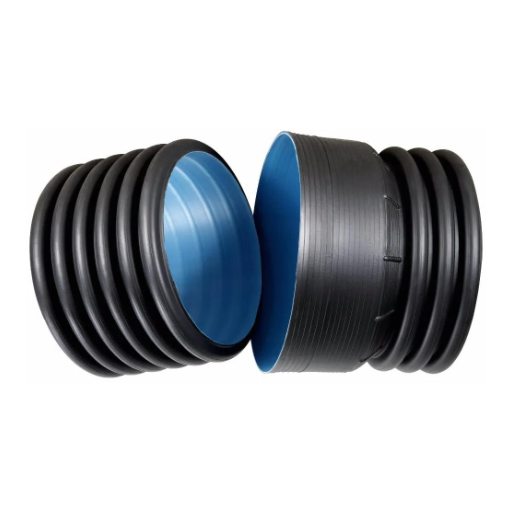
Benefits of High-Density Polyethylene vs. Corrugated Metal Pipe
In comparison to Corrugated Metal Pipe (CMP), High-Density Polyethylene (HDPE) has many benefits, such as greater lifespan, corrosion resistance, and even performance. Since it is made of non-metallic material, HDPE is not prone to chemical or environmental corrosion, and is, therefore, very suitable for use in acidic or alkaline soil as well as moist regions where pipes are susceptible to rust and corrosion.
In comparison to CMP, HDPE demonstrates greater flexibility and flexibility. While CMP is prone to deformation due to excessive load or shifting soil, HDPE is highly ductile and can withstand minor ground movements without structural failure. This is particularly useful in regions where freeze-thaw cycles are common, since soil expansion could damage pipes.
In hydrodynamics, HDPE pipes are regarded to have a smoother internal surface when compared to CMP. This translates to a lower Manning’s coefficient which improves flow rate and decreases sedimentation over time. Therefore, HDPE pipes enable the seamless transport of water while reducing the amount of maintenance required.
Moreover, the lifecycle cost of HDPE pipes is lower than other options. Though the purchase price of HDPE might be the same or slightly greater than CMP, HDPE’s long lifespan reduces repairs, replacements, and maintenance. Numerous studies indicate that HDPE pipes, when functioning under normal operating conditions, sustain an effective lifespan of approximately 50 to 100 years, which is significantly higher than most CMP installations.
Lastly, HDPE pipes do not harm the environment because they are fully recyclable and need much less energy for production compared to steel or aluminum required for CMP manufacturing. This helps reduce the carbon footprint of construction projects while supporting current eco-friendly building standards.
Is HDPE an Effective Alternative to Reinforced Concrete?
Due to its construction application, High-Density Polyethylene (HDPE) is used as a substitute for reinforced concrete because of the technical advantages it offers. The properties of HDPE, such as chemical resistance, flexibility, and lightweight, make it useful in harsh conditions where reinforced concrete would fail over long periods from harsh chemicals or structural stress. Laboratory tests and field studies have shown that HDPE can withstand acidic and saline corrosion environments much better than traditional concrete, which suffers from spalling and cracking from such conditions.
Moreover, thermal fusion other advanced jointing techniques form leak proof joints in HDPE piping systems which provide a stronger connection than traditional gasketed joints found in concrete pipelines. This improves the longevity of HDPE based systems while lessening maintenance. From a financial standpoint, HDPE often has lower installation, transport, and lifecycle costs due to the ease of handling lighter materials in comparison to the heavy machinery needed for concrete structures.
For instance, in situations such as where there is a high load bearing requirement, high density polyethylene (HDPE) has marked limitations. These remain dominant in reinforced concrete due to the immense structural requirements like bridges and the foundation of high rises because of the unparalleled compressive strength and rigidity it offers. Even HDPE reinforced composites continue blurring the line between polymers and concrete.
There is no doubt that these changes are bound to take place in polymer science. Considering these factors, low to mid range non load bearing applications in construction and civil engineering will find versatility in HDPE. Adopting this material does align with shifting environmental concerns as well as economic milestones which makes it a compelling option depending on the set demands of a project.
Examining Plastic Culvert as a Lightweight Option
Plastic culverts made of high-density polyethylene (HDPE) or polyvinyl chloride (PVC) are quickly becoming the lightest alternatives to traditional culvert applications. The distinct properties of these materials, such as relative flexibility, increased durability, and cost-effectiveness, all contribute to this. Bargaining weight also assists in transportation and installation while reducing heavy machinery use, which brings down expenses. Plastic culverts, on the other hand, are unyielding to corrosion, chemical degradation, and abrasion, supporting their functionality in high-stress environments like saline areas or acidic soil.
HDPE culverts as able to withstand $% years under normal conditions. Unique construction features HDPE which bestow a sense of repeated loading and minor ground movement make it maintain structure integrity due to stress. Sustainability is also a concern for manufactures looking to replace their materials with more eco friendly options. Plastic does support this aim and cuts down carbon being produced.
ASTM and AASHTO have provided guidelines that define specific standards these culverts must meet to ensure proper functionality and reliability under different circumstances. Thus, the implementation of plastic culverts is a sensible and eco-friendly option for contemporary infrastructural endeavors.
How Do Corrugated HDPE and N-12 Dual-Wall Pipe Perform in Drainage Applications?
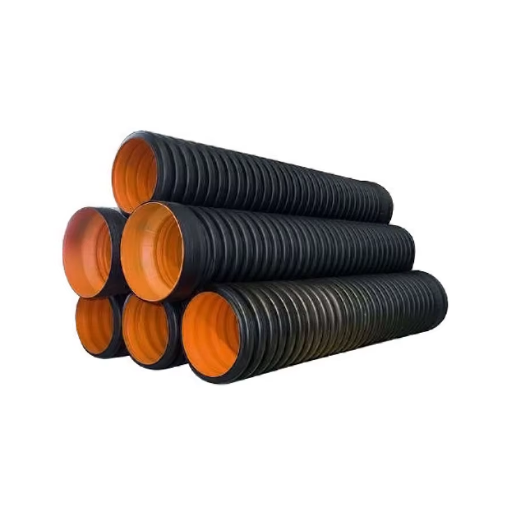
Advantages of Soil-Tight and Water-Tight Systems
- Enhanced Structural Integrity
Robust performance is ensured in various applications of drainage and long term stability is guaranteed on account of soil tight and water tight systems. The tight seals prevent exfiltration of water and infiltration of soil, which helps in maintaining the structural earth surrounding it’s integrity. For example, deformation under load is withstood by N-12 pipes with watertight joints.
- Reliable Flow Efficiency
Optimal flow rates are maintained due to the smooth interior surface of pipes like N-12 dual wall pipes and corrugated HDPE. The soil-tight and water-tight systems also prevent sediment build-up within the piping because they inhibit exfiltration and infiltration of water and aid in preserving hydraulic performance consistency. Some studies propose that “the n” value of Manning’s could go as low as 0.012, which would reinforce their efficiency.
- Resistance to Environmental Stressors
Significant durability is shown with these systems under environmental challenge such as freeze-thaw, chemical exposure and UV degradation. These are weather sealed that tightly with no gaps which minimizes damageable pressure from outside forces like water tables, soil, or shifting of soil which would damage less secure systems.
- Minimized Maintenance Requirements
Urban areas, as well as rural areas, suffer from life cycle costs and using the soil tight and water-tight systems gives uninterrupted operability while also reducing frequent maintenance. Compromised systems enable sand and water leakage which repeatedly requires fixing, lowering operational costs.
- Meeting the Regulatory Compliance
Soil tight and water tight drainage systems surpass numerous industry benchmarks including joint seal performance in ASTM D3212. These assurances make project approvals easier and show that the Construction is compliant with eco-friendly practices.
These factors support the value and effectiveness from a performance perspective while adopting soil-tight and water-tight systems in modern-day drainage functions.
Performance in Agricultural and Urban Settings
In my opinion, soil-tight and water-tight drainage systems stand out in both agricultural and urban settings because of their unique engineering and high level of compliance. In agricultural areas, these systems are effective in controlling water movement, subsequently lessening the chances of soil erosion alongside water contamination while preserving optimal soil health, which is necessary for crop growth and enabling ecosystem function balance. Furthermore, these systems also avoid the leaching of fertilizers or chemicals into surrounding water bodies because of their water-tight properties, which enhance sustainability and legal compliance.
On the contrary, in urban regions, these drainages systems assists in controlling flooding and managing stormwater effectively. With the rampant development of impervious surfaces within cities, the presence of water tight systems that can endure excess water while maintaining structural integrity becomes crucial. Moreover, complying with ASTM D3212 standards enhances the performance of these systems because joint seals remain strong under different operational conditions, which is important for harsh environments. These attributes lower the cost associated with maintenance and improve the reliability of urban infrastructure.
In summary, soil tight, and water tight drainage systems illustrate the best combination of longevity, precision, and care for the environment. These structures are revolutionizing systems for managing urban wastewater and controlling irrigation runoff in farmlands. They unceasingly provide reliable, eco-friendly results which adhere to contemporary engineering standards, making them valuable in various ecosystems.
Understanding Pipe Stiffness and Nominal Pressure Ratings
For modern infrastructure projects, both pipe stiffness (as load-bearing capability is measured in pounds per square inch and termed psi) and nominal pressure ratings impact the design, selection, and application of the entire piping network. Each pipe possesses an individual value of stiffness, which dictates the extent of external loading forces that a pipe can withstand without stepping into deformation territory. The pipe’s stiffness measurement becomes vital in cases of heavy soil loads, dynamic traffic pressures, and scenarios in which the pipe is installed at varying depths. Material composition, wall thickness, and diameter all impact the rigidity and structural performance of the pipe, subsequently defining its stiffness.
Stated as PN (Pressure Nominal) values, nominal pressure ratings define the maximum internal pressure imposed on a pipe under set operating conditions. Each system must ensure these ratings fit adequately within the system requirements, especially in cases where fluids are transported at high pressure. Depending on the physical and chemical properties of the material, varying levels of PVC, HDPE, and steel are deemed acceptable.
For example, HDPE pipes are used widely because of their flexibility and corrosion resistance while having a nominal pressure rating from PN6 to PN20, based on wall thickness and grade.
What are the Key Product Details for Corrugated HDPE Culvert Pipes?
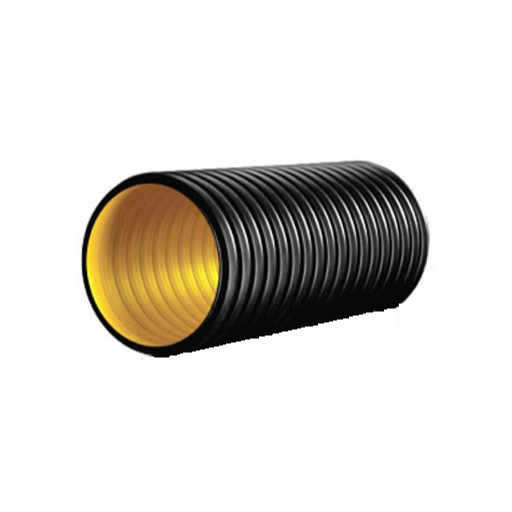
Examining Smooth Interior Wall and Corrugated Exterior
Developed for optimal use in drainage systems and water transportation, HDPE corrugated pipes are among the most advanced HDPE pipes. Dual walls with a smooth corrugated exterior are characteristic of each of these pipes. Given all the right conditions, the smooth interior wall minimizes friction and allows for the efficient flowing of water, making the pipe less likely to clog or gather sediment. Moreover, the exterior enhances the structure’s strength, bestowing it with a high durability rating alongside an impressive resistance to external pressures, load conditions, and environmental settings.
Designed for maximum performance, the interior wall of HDPE culvert pipes has a Manning’s roughness coefficient of 0.009, allowing for the lowest of low coefficients. From maximum hydraulic potential in stormwater maintenance, agricultural drainage, or even municipal sewer systems, this attribute is highly coveted. The structural resilience granted by the corrugated exterior makes deformation highly unlikely when the pipe sustains heavy loads of earth, maintaining integrity over an extended period. In addition to all of this, the pipes have a low weight in comparison to concrete and steel, further enhancing the ease of installation while also ensuring performance reliability.
Each culvert pipe made from HDPE is considered corrugated because it follows grade AASHTO M294 and ASTM F2648. This ensures that these pipes are reliable and consistent in their performance. The dual-wall structure of the pipes allows them to perform exceptionally well under external loads while remaining highly resistant to many chemicals, UV rays, and abrasive substances. Furthermore, they come in different lengths and diameters, fitting almost any project requirement. The combination of mechanical strength with guidance on the flow of water makes these pipes a top choice for infrastructure projects that are trying to reduce costs, increase sustainability, and need dependable solutions.
The Role of Gasket and Fitting Components
Gaskets and fittings keep piping systems working smoothly and effectively. These components must be carefully crafted to maintain connections, avoid leaks, and preserve the entire network’s operational stability while coping with pressure and environmental changes. Certain systems that deal with various liquids and gases are more complicated than others because they cannot afford even the tiniest of leaks due to operational and monetary losses. Gaskets and fittings ensure proper connections and leakproof seals, which add to the efficiency and reliability of the piping systems, thus contributing to infrastructure durability.
The following are five common gasket fitting parts used in modern piping systems:
- O-Rings: An O-ring is a gasket used in static and dynamic applications to prevent the leakage of fluid in a system that is under pressure. O-Rings are used in systems under pressure to make sure there are no leaks. They are made from rubber, silicone, or fluorocarbon and are quite flexible, making them resistant to high temperatures and corrosion.
- Flange Gaskets: Flange gaskets are perhaps the most common gaskets used for sealing two flanged joints together. Other gaskets come in several types, like spiral wound or ring type, enabling better sealing under high temperatures and pressure.
- Compression Fittings: In the world of plumbing and hydrology, fittings that enable joining pipes and tubing with no threading required are called compression fittings. Like gas lines and hydraulic systems, these systems use compression for fastening to avert leakage and create complete attachment.
- Elbow Fittings: Fittings that are used for changing flow direction along certain angles, like 90 bifurcation and 45 subdivision are called elbow fittings. Also, they are manufactured to withstand pressures and avert leakage in all places where directional bends occur.
- Coupling Sleeves: These are parts that connect two pipes and keep them in end alignment along the axis while ensuring proper sealing. Systems where pipes are subjected to positive or negative changes in dimensional parameters without complete failure of the system will greatly benefit from these adapters.
All adjustments in reliability, system efficiency, and safety of the entire system in any application area are accomplished by highly specific material properties and tolerance levels designed for each of these components.
References
Frequently Asked Questions (FAQ)
Q: What are the common sizes available for HDPE drainage pipe?
A: HDPE drainage pipes are available in a variety of sizes, typically ranging from 4 inches to 60 inches in diameter. The specific size used depends on the application and flow requirements. It’s important to refer to the product specifications to ensure compatibility with your project needs.
Q: How is HDPE corrugated pipe different from other types of drainage pipes?
A: HDPE corrugated pipe is known for its durability, light weight, and corrosion-resistant properties. Unlike other materials, HDPE offers superior flexibility and strength, making it ideal for a variety of applications, including gravity-flow drainage systems. Its corrugation provides added strength and allows it to withstand various environmental conditions.
Q: What applications are suitable for using HDPE drainage pipe?
A: HDPE drainage pipes are commonly used in a variety of applications such as stormwater management, agricultural drainage, and roadway drainage. They are particularly effective in situations requiring durable and corrosion-resistant materials, such as in areas where chemical exposure might occur.
Q: Can you provide case studies where HDPE drainage pipes were effectively used?
A: Several case studies highlight the effective use of HDPE drainage pipes in various projects. For example, HDPE pipes have been successfully utilized in large-scale stormwater management systems, providing long-term durability and reliability by environmental and safety standards.
Q: How does the ‘bell and spigot’ design benefit HDPE drainage pipes?
A: The ‘bell and spigot’ design in HDPE drainage pipes allows for easy installation and a secure fit, minimizing the risk of leaks. This design is particularly useful in applications where a tight seal is essential for maintaining the integrity of the drainage system.
Q: Are there options for perforated HDPE drainage pipes?
A: Yes, perforated HDPE drainage pipes are available and are commonly used in applications requiring water filtration, such as agricultural drainage. These pipes allow water to enter the pipe through small holes or slots, helping to manage excess water efficiently.
Q: What are the advantages of using N-12 HDPE drainage pipes?
A: N-12 HDPE drainage pipes offer several advantages, including high flow capacity, resistance to abrasion and chemicals, and long-term durability. They are designed to meet stringent industry standards, making them suitable for demanding drainage applications.



